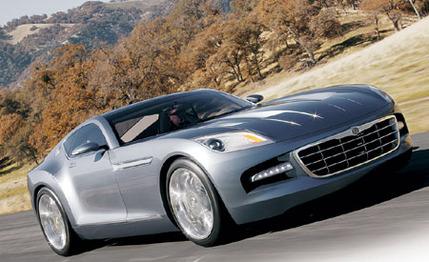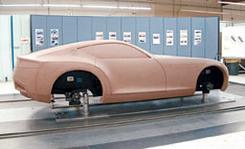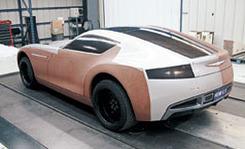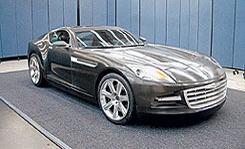 First Drive Review
First Drive Review
When times are tough, automakers tend to act like Presidents. They don't invade small, defenseless countries, but they have been known to pull an irrational stunt to divert attention away from bad news.
Market share is off? Let's buy an Italian company that rhymes with fettuccine. Quality is on the rocks? Time to revolutionize the sales chain with factory-owned dealerships. Shareholders in revolt? Please give a hand for our new platinum-plated supercar.
The Chrysler ME Four-Twelve, the mid-engine carbon-fiber queen of last year's auto-show circuit, was a diversion extraordinaire. DaimlerChrysler's management wants the plebeian Chrysler brand to ascend the market-crawl right up the pant leg of Lexus and find an artery. Difficult, especially when you're offering kickbacks to buyers to drive home Concordes and Pacificas.
A desperate year ago, throwing a Hail Mary bomb at the $500,000 line seemed to Chrysler chief operating officer Wolfgang Bernhard like a good way to move the team forward. With four turbos, 12 cylinders, 850 horsepower, and about two inches separating butts from bitumen, the ME Four-Twelve was a school-boy doodle in 3-D meant to purge memories of chrome-festooned Fifth Avenues. If the predicted price of a half-mil didn't move Chrysler upscale, well, perhaps nothing would. That was then.
Now, with Bernhard swept out of the company and the Chrysler 300 and Dodge Magnum hooking a U-ey on both the sales and self-assurance of the company, the pressure to do something silly is easing. Having gauged the line for $500,000 Chryslers to be remarkably short, the company is now considering more modest proposals for a flagship sportster.
 0502_chrysler_unfinished_01.jpg
0502_chrysler_unfinished_01.jpg
Allow us to introduce you to the Chrysler Firepower!--that's what the company calls it, and the name includes that disturbing exclamation point--a shapely and eminently more rational concept crumpet that will be spinning before the flashbulbs of the 2005 North American International Auto Show in Detroit by the time you read this. Painted the color of arcing electricity, the two-seat concept's stretched skin hides mostly off-the-shelf parts, including a stock Dodge Viper chassis, a stock 425-hp, 6.1-liter Hemi from the new Chrysler 300C SRT-8 [see preview], and a stock DaimlerChrysler five-speed automatic built in Kokomo, Indiana. Even the tires--concept cars typically wear hand-cut treads mimicking cheetah paws or the like--are stock Michelin Pilot Sports direct from the Tire Rack. A dealer window sticker ending in a number between $50,000 and $60,000 wouldn't look terribly out of place.
 0502_chrysler_unfinished_02.jpg
0502_chrysler_unfinished_02.jpg
Our first inspection of the Firepower! is accompanied not by flashbulbs but by the whiz of grinders and crackling of arc welders in the considerably less glitzy confines of the Metalcrafters workshop in Fountain Valley, California. Metalcrafters is the Pentagon basement of the auto industry, the place where designer sketches and million-megabyte computer models are milled, hammered, and vacuum-formed into auto-show stars. Everything except the tires, engine, and donor production parts is fabricated on site, including the carbon-fiber body panels, leather-trimmed interior pieces, aluminum wheels, and glass. Partitions divide the building into key-code locked cells--employees call them "build bays"--so visiting executives of one client can't peek at what competitors are creating.
 0502_chrysler_front.jpg
0502_chrysler_front.jpg
Bring your American Express card. Engineer Nevill Ooms, Metalcrafters' engineering liaison with the car companies, says even a straightforward concept car such as the Firepower! takes more than 20,000 man-hours to build and costs somewhere between $1.2 million and $3.2 million, depending on the ratio of fabricated parts to production parts. Some of the line items: A paint job runs about $40,000, a single wheel machined from billet aluminum costs $6000. Head- and taillights are usually machined from solid chunks of aluminum and acrylic. Client diddling and last-minute changes--longtime customer Chrysler is one of the better ones at avoiding these, says Ooms--only drive up the price.